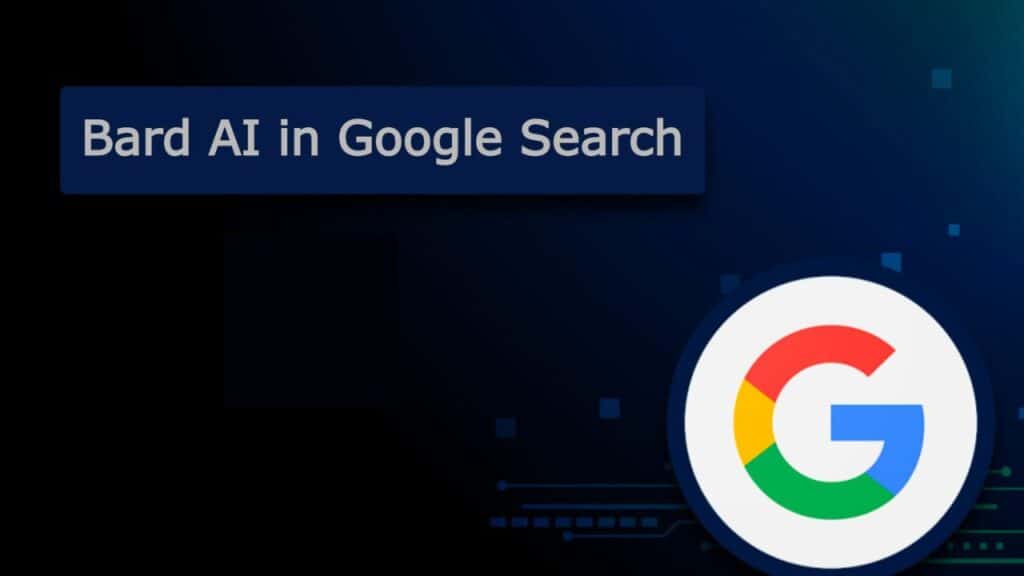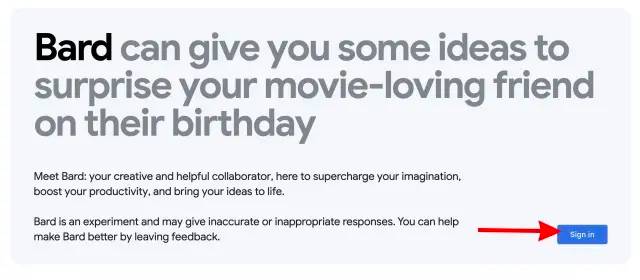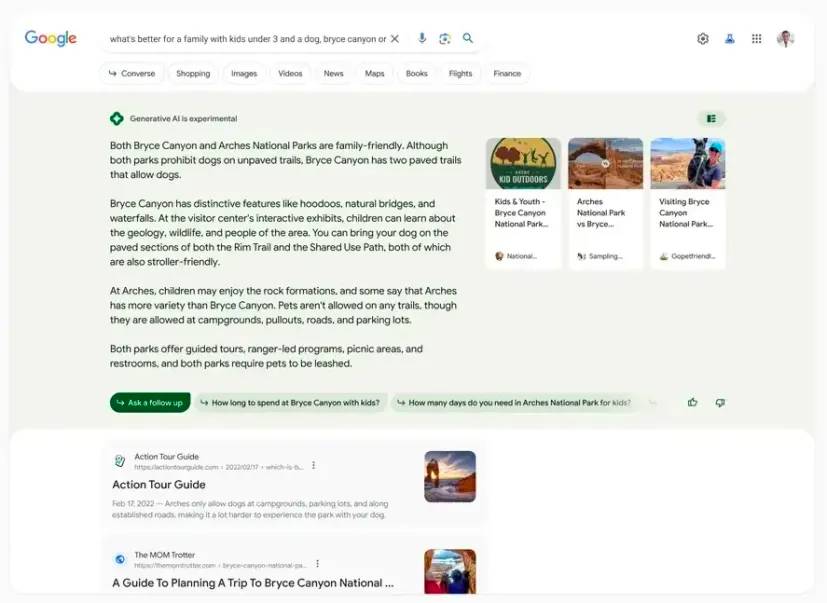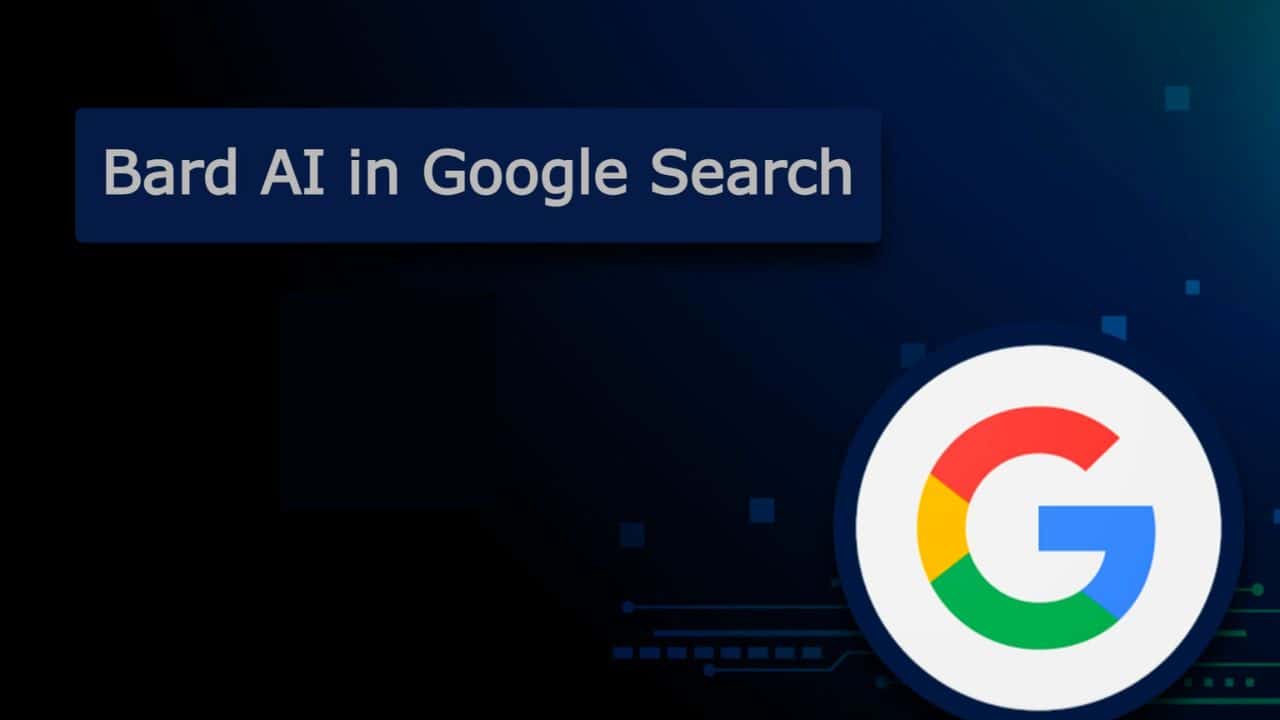Tired of searching and sifting through websites without quick answers on Google? Bard AI offers a solution! Find out how to get Bard AI in Google Search Results in this article. In the case of Google AI Search, it utilizes a generative AI model known as Search Generative Experience (SGE).
In this comprehensive guide, we’ll walk you through the steps to get Bard AI in your Google search results seamlessly. Let’s dive in!

Can I use Bard with Google search?
Yes,, Bard can access Google’s search engine, while ChatGPT can only access Bing search engine and individual websites and has only been trained on information available up to 2021.
How to Get Bard AI in Google Search Results
Bard AI is an innovative conversational AI service designed to boost creativity and satisfy your curiosity. By leveraging the extensive amount of data available on the web and the capabilities of large language models, Bard AI offers dynamic and insightful responses.
It is built upon PaLM 2, Google’s latest advanced language model, which represents a significant advancement in machine learning and responsible AI. To integrate Bard AI into your Google search results, simply follow these steps:
Step 1: Get the Bard for Search Engines Chrome Extension
A straightforward method to incorporate Bard AI into your Google search results is by installing the Bard for Search Engines Chrome extension. This convenient extension allows you to directly experience Bard AI responses within your search engine interface. To add the extension to your browser, follow these simple steps:
- Visit the Chrome Web Store and search for “Bard for Search Engines.”
- Click on the “Add to Chrome” button and confirm the installation.
- Once installed, you’ll notice a Bard icon located in the top right corner of your browser.

Install the Chrome Extension here: Bard for Search Engines
Step 2: Sign in to Google Bard
In order to get Bard AI on Google search results, it’s essential to sign in to Bard with your Google account. This will grant you access to personalized settings and preferences as well. Follow these steps to log in to Google Bard:

- Open your preferred web browser and navigate to the Google Bard website.
- A pop-up window will appear, prompting you to sign in with your Google account. Click on the “Sign In” button and enter your login credentials.
- Once you’ve signed in, patiently wait for the main chat interface to load. You’ll be greeted with a welcome message from Bard AI. There’s no need to input any text or modify any settings. Once the main page has loaded, simply close the tab.
Sign in to Bard AI with your Google account here: Google Bard Website
Step 3: Use Bard AI Right Inside Google Search
Now that you’ve completed the setup process, it’s time to use Bard AI in your Google search results.

- Head over to Google in the Chrome web browser and enter your search query as you normally would.
- As the search results appear, look at the right-hand sidebar where you’ll find Google Bard’s response. It’s as simple as that!
- The Bard for Search Engines extension generates the same responses as Bard AI’s chat interface. This means you can engage in a straightforward and quick conversation within Google search results, instead of giving prompts on the Bard AI website.
How is the new Google AI search different from Bard chatbot
Both Google AI Search and Bard Chatbot are powered by advanced AI technology based on large language models (LLMs). These LLMs are sophisticated neural network models that have been trained on vast amounts of text data to understand and generate human-like language.
In the case of Google AI Search, it utilizes a generative AI model known as Search Generative Experience (SGE). This model employs advanced natural language processing techniques to analyze search queries, understand context, and generate relevant and conversational responses.
Bard Chatbot, on the other hand, relies on Google’s large language model called PaLM 2 (Path-Augmented Language Model). PaLM 2 has been trained on a diverse range of text sources, enabling Bard Chatbot to generate creative and informative responses to user prompts.
While they share the underlying advanced AI technology, their functionalities and purposes differ significantly. Let’s explore the key differences between these two innovative offerings.
Functionality:
Google AI Search revolutionizes traditional search functionalities by providing contextually relevant answers through AI-powered snapshots integrated into search results. It aims to offer conversational and interactive search experiences.
Bard Chatbot, on the other hand, is designed for creative collaboration and utilizes a large language model to engage in human-like conversations.
Use Cases:
Google AI Search is suitable for traditional information-seeking queries, such as obtaining factual information, conducting research, and making purchase decisions. It caters to a broad range of user needs, providing targeted responses to various queries.
Bard Chatbot excels in creative collaboration and problem-solving. Its capabilities in completing creative tasks make it an invaluable tool for developers, writers, and individuals seeking creative solutions.
Interaction Style:
Interaction with Google AI Search primarily involves asking questions and receiving relevant answers. Users can engage in dialogues and refine their queries to obtain more specific information.
Bard Chatbot offers a more interactive and conversational experience. Users can engage in human-like conversations, prompt the chatbot with questions or creative writing requests, and receive detailed responses.
Focus on Creativity:
While Google AI Search enhances the search experience and provides contextually relevant information, its primary focus is not on creative endeavors. It aims to provide informative and concise answers to user queries.
Bard Chatbot, on the other hand, is explicitly designed to foster creativity. It shines in generating creative content. It can assist you with writing tasks, generating code, and solving problems in creative and interactive ways.
Conclusion
We hope this article has helped you understand how to get Bard AI in Google search results and how it differs from the new Google AI search. Like engaging in a conversation with the main chat interface of Bard AI, the extension presents the exact messages Bard would display to the user.
While full support for other Chromium-based browsers is not yet available, the “Bard for search engines” extension is still an excellent way to use Bard directly within Google search. Feel free to contact us or leave a comment below if you have any questions or feedback.
